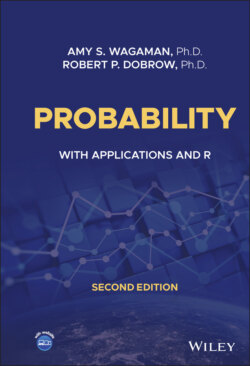Читать книгу Probability - Robert P. Dobrow - Страница 18
1.3 PROBABILITY FUNCTION
ОглавлениеWe assume for the next several chapters that the sample space is discrete. This means that the sample space is either finite or countably infinite.
A set is countably infinite if the elements of the set can be arranged as a sequence. The natural numbers is the classic example of a countably infinite set. And all countably infinite sets can be put in one-to-one correspondence with the natural numbers.
If the sample space is finite, it can be written as . If the sample space is countably infinite, it can be written as .
The set of all real numbers is an infinite set that is not countably infinite. It is called uncountable. An interval of real numbers, such as (0,1), the numbers between 0 and 1, is also uncountable. Probability on uncountable spaces will require differential and integral calculus and will be discussed in the second half of this book.
A probability function assigns numbers between 0 and 1 to events according to three defining properties.
